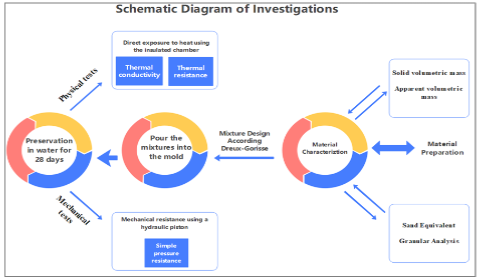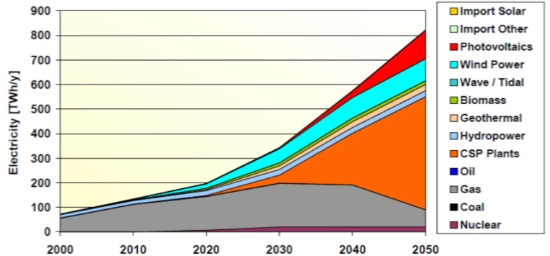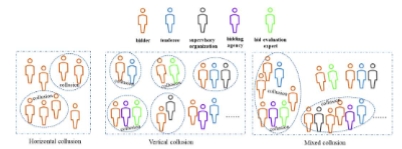Appraising the potentials of reusing plastic bottles as building blocks for housing construction at Paipe village Abuja Nigeria
Abstract
Plastic bottles package a multitude of commodities consumed worldwide. Upon consumption of the commodity, the disposed plastic bottles accumulate as waste, having impacts on both the aquatic and terrestrial environment. In a bid to convert such waste to wealth, plastic bottles are creatively reused for different applications, such as pedestrian bridge boats and street furniture, amongst others. Another application of reusing plastic bottles is their serving as building blocks for housing construction. Reports and research in Nigeria confirm the proliferation of plastic bottles littering the environment, which if reused in housing construction has the potential to contribute to achieving both UN Sustainable Development Goals (SDG) 11 (making human settlements sustainable) and 12 (ensuring sustainable consumption and production). Although Nigeria is traced to being the first country in Africa to reuse plastic bottles in housing construction, not much research output exists from practitioners’ experience on the potentials of reusing plastic bottles as a sustainable construction material as practiced in countries like Vietnam, India, and the Philippines, among others. As such, this study investigates the potential factors driving the practice of reusing plastic bottles in Nigeria with a view to ascertaining the satisfaction derived from the practice for sustainable housing construction. Primary data was collected using a structured questionnaire from 41 respondents identified as having experience in using plastic bottles in construction (5 staffs of Awonto Konsult as well as 36 staffs of Brains and Hammers Construction). Data was analysed descriptively using both IBM SPSS Statistics 23 as well as MS Excel to compute the Mean Score as well as the Relative Satisfaction Index (RSI). Only 30 questionnaires were successfully retrieved and fully answered. Amongst the 10 potential factors studied driving reusing plastic bottles, results show that almost all respondents tend to be ‘satisfied’ with both ‘strength and stability’ (having a Mean Value of 4.70 and RSI of 0.94) as well as ‘durability’ (having a Mean Value of 4.50; RSI of 0.90) of buildings built with plastic bottles. These two factors recorded the highest ‘satisfaction’ ratings, leaning towards ‘very satisfied’. Regarding the factor ‘fire resistance’ of buildings built with plastic bottles (having a Mean Value of 3.40; RSI of 0.68), results reveal that 50 percent of the respondents are ‘unsure’ if it is a satisfactory factor driving reusing plastic bottles or not. The study found that the satisfaction ratings of technical and environmental factors have higher appeal to respondents compared to health and safety and also financial factors. It is recommended that Awonto Konsult and also Brains and Hammers Construction invest more in information related to the fire resistance of plastic bottles used in construction because fire outbreaks pose great threats to buildings. Equally, wider empirical research on plastic bottle wastes, if undertaken, could support the development of policies for waste management, particularly in developing countries. This research has the potential to convert waste into wealth in a bid to minimising environmental impacts of disposed plastic bottles as well as contribute to sustainable materials, particularly for rural housing. Since this study was based on a survey, experimental studies of potentials driving the reuse of plastic bottles in housing construction will reveal results that could enable more sustainable housing construction in Nigeria.
References
[1]Mansour AMH, Ali SA. Reusing waste plastic bottles as an alternative sustainable building material. Energy for Sustainable Development. 2015; 24: 79-85. doi: 10.1016/j.esd.2014.11.001
[2]Pradha SS, Saranya K. Recycling Plastic Waste into Construction Materials for Sustainability. IOP Conference Series: Earth and Environmental Science. 2023; 1-9.
[3]Nwakaego O, Arash B, Olutola F. A, Muyiwa O. (2024). The Bottle House: Upcycling Plastic Bottles to Improve the Thermal Performance of Low-Cost Homes Sustainability 16(4):1360DOI: 10.3390/su16041360.
[4]Smriti S. Bottle Bricks and the Esthetics of Beauty. Pool Magazine. 2010.
[5]Awoyera PO, Adesina A. Plastic wastes to construction products: Status, limitations and future perspective. Case Studies in Construction Materials. 2020; 12: e00330. doi: 10.1016/j.cscm. 2020.e00330
[6]Pati JD, Homma R, Iki K. Plastic Bottle Masonry as Alternate Solution to Housing problems in Urban Areas of India Plastic Bottle Masonry as Alternate Solution to Housing Problems in Urban Areas of India. In: Proceedings of the 4th World Conference on Applied Sciences, Engineering & Technology; 2015; Japan.
[7]Niranjan D, Rushikesh P, Sahil, et al. Plastic Bottles Used in Construction. International Journal of Advance Engineering and Research. 2018; 5(4): 1-4.
[8]Abouhadid M, Ashraf M, Shafik R, et al. Thermal Performance of Plastic Bottles Walls Reused in Building Construction for Waste Reduction. International Journal of Innovative Technology and Exploring Engineering. 2019; 9(1): 5311-5315. doi: 10.35940/ijitee.a4227.119119
[9]Haque MdS, Islam S. Effectiveness of waste plastic bottles as construction material in Rohingya displacement camps. Cleaner Engineering and Technology. 2021; 3: 100110. doi: 10.1016/j.clet.2021.100110
[10]Deore D, Nema A. Reusing Plastic Bottles Made of Non-Degradable Waste in Construction A Review. International Journal of Research Publication and Reviews. 2023; 4(5): 5130-5136.
[11]Hamada HM, Al-Attar A, Abed F, et al. Enhancing sustainability in concrete construction: A comprehensive review of plastic waste as an aggregate material. Sustainable Materials and Technologies. 2024; 40: e00877. doi: 10.1016/j.susmat.2024.e00877
[12]Abdul MM. Re-use of Plastic Bottles. Dhaka Bangladesh; 2006.
[13]Graettinger AJ, Johnson PW, Sunkari P, et al. Recycling of plastic bottles for use as a lightweight geotechnical material. Management of Environmental Quality: An International Journal. 2005; 16(6): 658-669. doi: 10.1108/14777830510623727
[14]Raghuchandra G, Vatsalya C, Udit BD, et al. Investigating the Application of Plastic Bottle as a Sustainable Material in Building Construction. International Journal for Scientific Research & Development. 2004; 5(5): 593-599.
[15]Nishad S, Parthe V, Rathod S, et al. Eco-Friendly House Construction using Pet Bottles. IRJET Journal .2018; 6 (3): 101-103.
[16]Kavinkumar V, Balasubramaniam N, Gopalakrishnan P, et al. Development of plastbrick using plastic wastes & PET bottles. Materials Today: Proceedings. 2022; 68: 2601-2604. doi: 10.1016/j.matpr.2022.10.011
[17]Roberts BM, Beizaee A, Onyenokporo N, et al. Upcycled construction materials to reduce dwelling overheating in tropical climates: The bottle house. Building and Environment. 2023; 234: 110183. doi: 10.1016/j.buildenv.2023.110183
[18]Slater J, Heath L, Peng O, et al. Plastic Bottle Bricks: A Report Documenting our Findings in Relation to Waste Management in Anh Minh District of Vietnam. University of Western Australia; 2012.
[19]Ahmed N. Utilizing plastic waste in the building and construction industry: A pathway towards the circular economy. Construction and Building Materials. 2023; 383: 131311. doi: 10.1016/j.conbuildmat.2023.131311
[20]Jawaid M, Singh B, Kian LK, et al. Processing techniques on plastic waste materials for construction and building applications. Current Opinion in Green and Sustainable Chemistry. 2023; 40: 100761. doi: 10.1016/j.cogsc.2023.100761
[21]Shoubi MV, Shoubi MV, Barough AS. Investigating the Application of Plastic Bottle as a Sustainable Material in the Building Construction. Civil Engineering Journal. 2013; 2(1): 28-34.
[22]Rawat SA, Kansal R. PET Bottles as Sustainable Building Material: A Step Towards Green Building Construction. Journal of Civil Engineering and Environmental Technology. 2014; 1(6): 1-3.
[23]Agbola T. Housing Strategies Readings in Urban and Regional Planning. Macmilla Nigeria Publishers Limited; 2004.
[24]Adeagbo A. Overview of the Building and Construction Sector in the Nigerian. Nigerian Institute of Social and Economic Research; 2014.
[25]Ajayi IS. Addressing Housing Deficit in Nigeria: Issues, Challenges and Prospects. Economic and Financial Review Volume. 2019; 57(4): 223-237.
[26]Sajane AS, Agam SE, Patil RR, et al. Construction of Houses using Plastic Bottles. International Journal of Engineering Technology Science and Research. 2017; 4(4): 99-104.
[27]Kougnigan AMJN, Mwero J, Mutuku R. Modeling of Thermal Performance and Mechanical Properties of Concrete Blocks Incorporating Plastic Bottle Waste with Crushed Clay Bricks as Coarse Aggregates. Cogent Engineering. 2023; 10(2). doi: 10.1080/23311916.2023.2283334
[28]Greene PJ. Sustainable Plastics: Environmental Assessments of Biobased, Biodegradable and Recycled Plastics. Wiley; 2014.
[29]Jalaluddin M. Use of Plastic Waste in Civil Constructions and Innovative Decorative Material (Eco-Friendly). MOJ Civil Engineering. 2017; 3(5). doi: 10.15406/mojce.2017.03.00082
[30]Bhanderi K. K., Joshi R. J. & Patel J. V. (2023) Recycling of Polyethylene Terephthalate (PET Or PETE) Plastics – An Alternative to Obtain Value Added Products: A Review. Journal of Indian Chemical Society (2023)
[31]Tafline L. Africa’s First Plastic Bottle House Rises in Nigeria. INHABITAT; 2011.
[32]Sourav BB, Sehgal S, Malhotra S. Study of Polyethylene Terephthalate (PET) Plastic Bottles in Threaded form as Micro Level Reinforcement in Fly Ash Concrete. Global Journal of Engineering Science and Researches. 2018; 5(7): 466-481.
[33]Tiwari R, Azad N, Dutta D, et al. A critical review and future perspective of plastic waste recycling. Science of The Total Environment. 2023; 881: 163433. doi: 10.1016/j.scitotenv.2023.163433
[34]Van Ewijk S., Stegemann J. A. Limitations of the waste hierarchy for achieving absolute reductions in material throughput, Journal of Cleaner Production, Volume 132, 2016,
[35]INHABITAT. Africa's First House Made of Plastic Bottles in Nigeria. https://inhabitat.com/africas-first-plastic-bottle-house-rises-in-nigeria/nigeria-bottle-house-2/. 2011.
[36]Suleiman MG. Investigating the use of Plastic Bottles as Recycle Material For Construction of Sustainable Buildings in Nigeria, Zaria. ResearchGate. 2018.
[37]Tarabieh KA, Nassar K, Sharkass M. A Comparative Study of the Thermal Performance of Plastic Bottle Wall against Traditional Composite Brick Wall Typologies. Journal of Construction Research. 2021; 2(1). doi: 10.30564/jcr.v2i1.2653
[38]Festus AI, Amos OI. Housing Policy in Nigeria: An Overview. American International Journal of Contemporary Research. 2015; 5(2): 53-59.
[39]Messahel B, Onyenokporo N, Takyie E, et al. Upcycling agricultural and plastic waste for sustainable construction: a review. Environmental Technology Reviews. 2023; 12(1): 37-59. doi: 10.1080/21622515.2023.2169642
[40]Shih YF, Chang CW, Hsu TH, et al. Application of Sustainable Wood-Plastic Composites in Energy-Efficient Construction. Buildings. 2024; 14(4): 958. doi: 10.3390/buildings14040958
[41]Onyenokporo NC, Beizaee A, Adekeye OF, et al. The Bottle House: Upcycling Plastic Bottles to Improve the Thermal Performance of Low-Cost Homes. Sustainability. 2024; 16(4): 1360. doi: 10.3390/su16041360
[42]Oladele IO, Okoro CJ, Taiwo AS, et al. Modern Trends in Recycling Waste Thermoplastics and Their Prospective Applications: A Review. Journal of Composites Science. 2023; 7(5): 198.
[43]Nkpite SB, Wokekoro E. Post-Occupancy Evaluation Tools for Effective Maintenance Management of Public Schools. British Journal of Environmental Sciences. 2017; 5(3): 1-8.
[44]Mansir D, Gambo MM, YarAdua HF, et al. Factors Affecting the Use of Expanded Polystyrene (EPS) for Sustainable Housing Construction in Nigeria. In: Proceedings of the 10th West African Built Environment Research Conference (WABER); 2019.
[45]Fellows R, Liu A. Research Methods for Construction, 3rd ed. United Kingdom: Blackwell Publishing Ltd; 2008.
[46]Saunders M, Lewis P, Thornhill A. Research Methods for Business Students, 5th ed. England: Pearson Education Limited; 2009.
[47]Ejohwomu OA, Oshodi OS, Lam KC. Nigeria’s construction industry: barriers to effective communication. Engineering, Construction and Architectural Management. 2017; 24(4): 652-667. doi: 10.1108/ecam-01-2016-0003
[48]Aigbavboa CO, Thwala WD. Post Occupancy Evaluation of Housing Subsidy in Johannesburg, Guateng Province-Beneficiaries View. In: Proceedings of the 5th Built Environment Conference; 2010; Johannesburg, South Africa. pp. 327-344.
[49]Olusola S. Quantitative Assessment of Construction Materials Wastage in the Nigerian Construction Sites. Journal of Emerging Trends in Economics and Management Sciences. 2012; 3(3): 238-241.
[50]Khangale BU, Ozor AP, Mbohwa C. A Review of Recent Trends and Status of Plastics Recycling in Industries. Engineering and Applied Science Research. 2010; 48(3): 340-350.
[51]Holt, D.G., 2014. Asking Questions , Analysing Answers : Relative Importance Revisited. Construction Innovation, 14(1), pp.2–16.
[52]Joshi, A., Kale, S., Chandel, S. and Pal, D. (2015) Likert Scale: Explored and Explained. BritishJournal of Applied Science & Technology, 7, 396-403. https://doi.org/10.9734/BJAST/2015/14975.
[53]Bishop, P.A. & Herron, R.L., 2015. Use and Misuse of the Likert Item Responses and Other Ordinal Measures. International Journal of Exercise Science, 8(3), pp.297–302.
[54]Harpe, S.E., 2015. How to Analyze Likert and other Rating Scale Data. Currents in Pharmacy Teaching and Learning, 7, pp.836–850.
[55]Khangale B. U. Ozor A. P. & Mbohwa C. (2021). A Review of Recent Trends and Status of Plastics Recycling in Industries. Engineering and Applied Science Research 48(3):340-350.
Copyright (c) 2024 Mansir Dodo, Abdulmalik Badamasi, Kabir Ibrahim, Narimah Kasim, Zairra Mat Jusoh, Suleiman Musa Garba, Sanusi Gambo

This work is licensed under a Creative Commons Attribution 4.0 International License.












